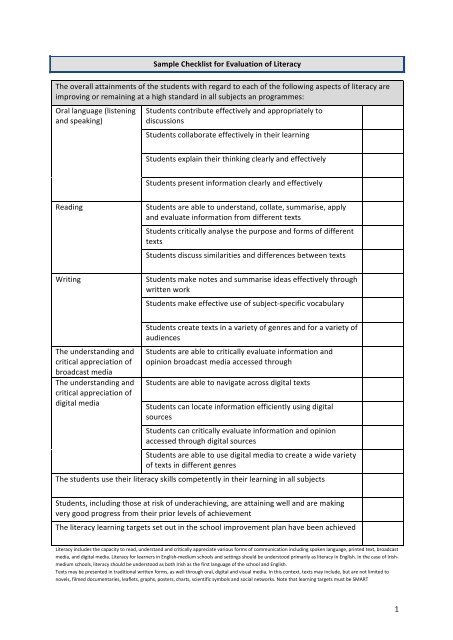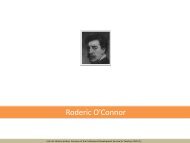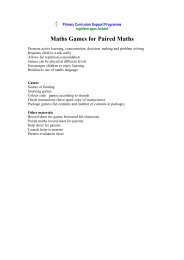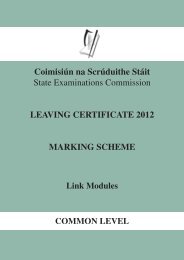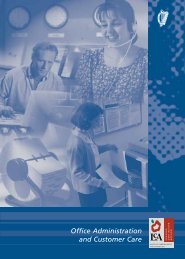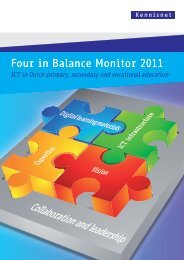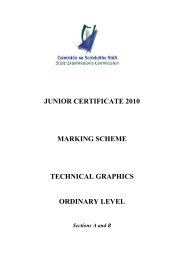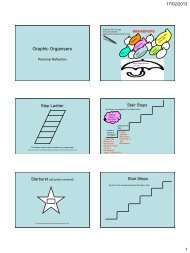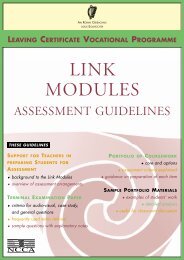Checklist for Literacy & Numeracy - PDST
Checklist for Literacy & Numeracy - PDST
Checklist for Literacy & Numeracy - PDST
You also want an ePaper? Increase the reach of your titles
YUMPU automatically turns print PDFs into web optimized ePapers that Google loves.
Sample <strong>Checklist</strong> <strong>for</strong> Evaluation of <strong>Literacy</strong> The overall attainments of the students with regard to each of the following aspects of literacy are improving or remaining at a high standard in all subjects an programmes: Oral language (listening and speaking) Students contribute effectively and appropriately to discussions Students collaborate effectively in their learning Students explain their thinking clearly and effectively Students present in<strong>for</strong>mation clearly and effectively Reading Students are able to understand, collate, summarise, apply and evaluate in<strong>for</strong>mation from different texts Students critically analyse the purpose and <strong>for</strong>ms of different texts Students discuss similarities and differences between texts Writing Students make notes and summarise ideas effectively through written work Students make effective use of subject-‐specific vocabulary The understanding and critical appreciation of broadcast media The understanding and critical appreciation of digital media Students create texts in a variety of genres and <strong>for</strong> a variety of audiences Students are able to critically evaluate in<strong>for</strong>mation and opinion broadcast media accessed through Students are able to navigate across digital texts Students can locate in<strong>for</strong>mation efficiently using digital sources Students can critically evaluate in<strong>for</strong>mation and opinion accessed through digital sources Students are able to use digital media to create a wide variety of texts in different genres The students use their literacy skills competently in their learning in all subjects Students, including those at risk of underachieving, are attaining well and are making very good progress from their prior levels of achievement The literacy learning targets set out in the school improvement plan have been achieved <strong>Literacy</strong> includes the capacity to read, understand and critically appreciate various <strong>for</strong>ms of communication including spoken language, printed text, broadcast media, and digital media. <strong>Literacy</strong> <strong>for</strong> learners in English-‐medium schools and settings should be understood primarily as literacy in English. In the case of Irish-medium schools, literacy should be understood as both Irish as the first language of the school and English. Texts may be presented in traditional written <strong>for</strong>ms, as well through oral, digital and visual media. In this context, texts may include, but are not limited to novels, filmed documentaries, leaflets, graphs, posters, charts, scientific symbols and social networks. Note that learning targets must be SMART 1
Sample <strong>Checklist</strong> <strong>for</strong> Evaluation of <strong>Numeracy</strong> The overall competence of the students with regard to each of the following skills is improving or remaining at a high standard: Knowledge and Students display their understanding of number processes understanding of and concept mathematical concepts Students are encouraged to hypothesise and propose solutions Students can explain their reasoning Application of concepts Students tackle problems in familiar and unfamiliar contexts and problem-‐solving Students identify the relevant skills and concepts Students work independently and collaboratively Students evaluate their solutions Students are aware of and avoid common mathematical misconceptions Communicating and expressing Integrating and connecting Data acquisition and analysis Implementing Students contribute effectively and appropriately to discussions Students use multiple representations Students use mathematical language correctly Students are encouraged to estimate and to develop mental agility Students make effective use of ICT Students make links to other areas of the curriculum Students apply numeracy skills in a range of contexts Students develop an understanding of the role of numeracy in everyday life Students look <strong>for</strong> patterns and can identify similarities and differences Students are competent in gathering, representing and analysing data Students display an understanding of randomness, bias, chance and causality Students develop the capacity to engage with and complete asks and assignments Students, including those at risk of underachieving, are attaining well and are making very good progress from their prior levels of achievement The students use their numeracy skills competently in all subjects and programmes Uptake in Mathematics at higher level in the state examinations compares favourably with national norms Student per<strong>for</strong>mance in Mathematics in state examinations compares favourably with national norms Analysis of uptake and per<strong>for</strong>mance is linked to actions <strong>for</strong> improvement in the mathematics subject plan The numeracy learning targets set out in the school improvement plan have been achieved <strong>Numeracy</strong> is not limited to the ability to use numbers, to add, subtract, multiply and divide. <strong>Numeracy</strong> encompasses the ability to use mathematical understanding and skills to solve problems and meet the demands of day-‐to-‐day living in complex social settings. Note that learning targets must be SMART (Specific, Measurable, Actionable, Realistic and Timed) 2


